Armored T17 and T17E1 (USA). Similar names and different fates
Ford T17
The requirements of the military were determined in mid-1941. The US military demanded to create an armored car with all-wheel drive chassis, as well as relatively powerful weapons and armor. A promising machine was to carry a 37 mm caliber cannon and several machine guns. The armored corps had to withstand the hit of bullets and fragments, and, if possible, small-caliber artillery shells. The requirements for a promising armored car were such that in its characteristics of firepower and protection it could compete with the lungs and even some medium tanks that time. All this, in particular, led to a significant combat mass of the finished armored car.
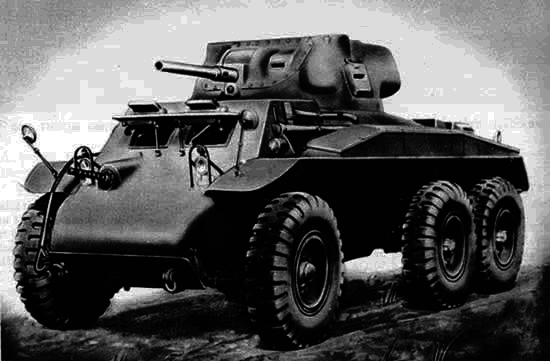
The prototype armored car T17 was introduced in the early spring of the year 1942. The car turned out to be quite large and heavy, which was due to the demands placed on it. The armored vehicle was about 5,5 meters long, 2,7 meters wide and 2,35 meters high and weighed a little less than 13 tons. Such a large combat weight of the armored car was determined by the design of its hull. The fact is that the body of the armored car T17 had rather thick armor for the American equipment of that time. The cast frontal part of the hull had a thickness from 31,75 to 50,8 mm (up to 2 inches), beads - from 17,8 to 22,2 mm, feed - 17,8 mm. The cast turret had a forehead 50,8 mm thick, as well as sides and stern of 12,7 mm. It is easy to see that, in terms of protection, the armored car T17, at least, was not inferior to some tanks of the early forties.
T17 received not only "tank" armor. The layout of the internal volumes of the hull was made in accordance with the classical ideas of tank design. In front of the building there was a department of management with jobs for the driver and his assistant, who performed the functions of a machine gunner and navigator. Behind him, in the middle of the case, there was a fighting compartment with a double turret. Stern hull given under the engine and part of the transmission units. In addition, under the floor of the fighting compartment and the control compartment were located cardan shafts and other elements of the transmission, which ensured the drive of all six wheels.
The prototype of the T17 armored vehicle was equipped with a Ford liquid-cooled gasoline engine manufactured by the Ford 90 horsepower company. Through a mechanical transmission, engine torque was transmitted to six wheels. The wheeled suspension of the armored car was equipped with an independent suspension using leaf springs. The wheels had pneumatic tires measuring 12x20 inches.
In the tower of an armored car seats were placed commander and gunner. The gunner controlled a twin installation with an 37-mm gun M6 and a 7,62-mm Browning M1919 machine gun. One more machine gun of the same type was available for the assistant driver. In the fighting compartment managed to place more than a hundred shells for guns. For guidance weapons and monitoring the situation, the commander and gunner could use telescopic and periscopic optical instruments. The driver and his assistant also had periscopic observation devices. For landing and leaving the car in the port side and on the tower, hatches were provided.
Until the end of spring 1942, the prototype T17 armored car passed the first tests at the Aberdeen Proving Ground. Despite the large mass of combat, the new armored car showed quite high performance. On the highway, it could accelerate to 88-90 km / h, the cruising range exceeded 720 kilometers. The firepower of the 37-mm guns and two machine guns, as well as thick armor in theory, allowed the new armored car to effectively deal not only with the machines of its class, but also with some tanks of that time.
It should be noted that the tests of the first experienced armored car had almost no effect on the opinion of potential customers. Back in the late stages of design, the US military began to doubt the need for such technology. Ford’s T17 armored car didn’t meet some of the requirements of the army, making it unlikely to be purchased. However, as early as January of 42, the British military showed great interest in the project. After reviewing the documentation on the prospective armored car, they wished to purchase more 2200 units of new technology.
The Ford T17 armored car was adopted by the British army under the name Deerhoun ("Dirhound" - a breed of hound dogs). Until the end of 1942, Ford built more than 250 armored cars of the new model. In the preparation of mass production for the needs of the UK, the project has undergone some changes. Instead of the original 90-strong engine, the Deerhound armored car received a British Hercules JXD engine with a 110 horsepower. Due to this, new armored vehicles began to meet the standards of the British army, and also slightly improved their performance.
Six Dirhound armored cars from the first batch handed over to Britain almost immediately went to North Africa. Already the first experience of the use of new technology in a real war disappointed the British military. Heavy wheeled armored car could not effectively fight in African conditions, and the relatively high firepower and level of protection in some situations were insufficient. For this reason, having received the first few serial armored cars, the United Kingdom refused to make further purchases.
According to reports, in the United States there are about 250 new armored vehicles destined for delivery abroad. The T17 / Deerhound armored cars were not fully suited by the British, and the US military treated them with even more skepticism. As a result, two and a half hundreds of already built cars lost their guns and were sent to serve in the military police. Later, some attempts were made to “reanimate” the project, but in February 1944, all work was finally stopped.
The exact number of built armored vehicles T17 / Deerhound raises some questions. It is known about the existence of approximately 250 machines that were built for the UK, but remained in the United States. Nevertheless, in one of the Brazilian museums are stored two armored vehicles of this type. The origin of this technique is not completely clear. Probably, before Brazil, she managed to serve in the American or British units. In addition, it can not be excluded that the armored cars T17 after World War II were not only in Brazil and the number of surviving vehicles of this type can be more than is considered.
Chevrolet T17E1
Simultaneously with the Ford company, Chevrolet was working on its advanced gun armored car project. According to some data, the specialists of the two companies consulted with each other, thanks to which their developments had a number of common features. In particular, some elements of the hull and the tower had a similar structure.
The development of Chevrolet under the designation T17E1 differed from the Ford T17 in several important features. First of all, this is the undercarriage design: the Chevrolet armored car was biaxial. In addition, T17E1 had a smaller thickness reservation. It should be noted, a similar difference in the design almost did not affect the weight of the finished armored car. The four-wheel T17E1 was just a ton lighter than the T17. At the same time, however, the creation of new modifications of this machine was constantly accompanied by an increase in the combat mass.
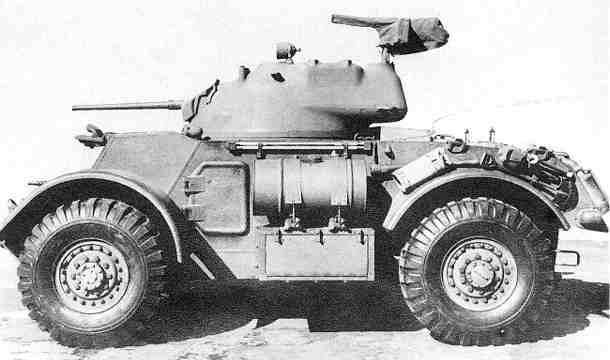
The armored hull of the T17E1 consisted of relatively thin parts (compared to the T17). The frontal part of the hull had a thickness of 22 mm, the sides - according to 19 mm. On top of the crew and units defended 12,7-mm roof, bottom - the bottom thickness from 6,5 to 12,7 mm. The engine was covered with a stern sheet 9,5 mm thick. The twin turret had a forehead 45 mm thick, the sides and stern of the 32 mm and 13 mm roof. The use of common practices to create two armored vehicles led to the fact that T17E1 had approximately the same dimensions as T17: length about 5,5 m, width 2,8 m, height 2,36 m.
The T17E1 armored car had the same layout as the T17. In front of the case there was a control compartment with a control station and a driver’s workplace, as well as a ball machine with a machine gun and a driver’s assistant seat. In the middle part of the corps there was a fighting compartment with a tower, and in the stern - a power plant. Two doors were provided in the hull (behind the front wheels), two more hatches were in the roof of the tower.
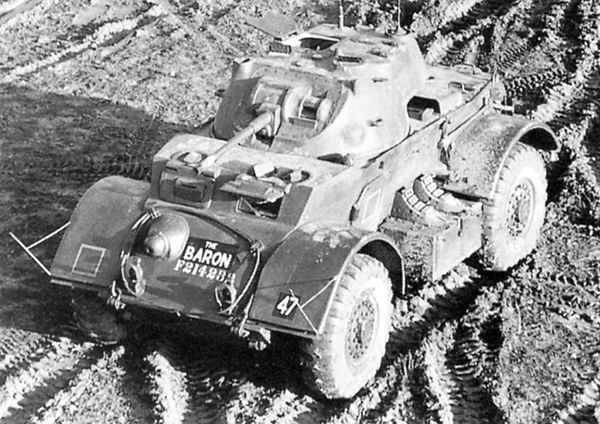
In the stern of the armored car T17E1 there were two petrol engines Chevrolet / GMC 270 with the power of 97 hp. The structure of the transmission introduced two four-speed gearboxes. The transmission units, which distributed torque to four wheels, were located in the rear of the hull and under the floor of the crew compartment. The chassis of the armored vehicle with a wheel formula 4x4 was equipped with an individual suspension with leaf springs and additional hydraulic shock absorbers. To simplify the work of the driver, the armored car was equipped with an electro-hydraulic power steering and a vacuum brake booster.
Carrying out the order of the military, the designers of the Chevrolet company equipped a new armored car with cannon-machine gun weapons. In the rotary turret mounted twin installation with a gun M6 caliber 37 mm and machine gun M1919 caliber 7,62 mm. In addition, the armored car carried two more machine guns of this type: coursework in a ball mount in the front hull plate and zenith on the turret on the roof of the tower. Also on the roof of the tower were placed two smoke grenade launchers. It was possible to place 106 shells for the cannon on the racks of the fighting compartment. The total ammunition of three machine guns consisted of 5250 cartridges, smoke grenade launchers - from 14 grenades.
The crew of the armored car T17E1 consisted of four people: a driver, an assistant driver (also a radio operator), a commander and a gunner. All crew jobs were equipped with inspection hatches or appliances. For example, the driver and the gunner could use the hatches in the front hull sheet or the periscope devices, which allowed them to monitor the situation with the hatches closed, for the review.
In the spring of 1942, the first prototype of the T17E1 armored car was put to the test. Two 97-strong engines provided good performance for the 12-ton car. The maximum speed on the highway reached 90 km / h. It was noted that the power steering significantly simplified the control of the car: on the highway, it behaved like a passenger car.
Shortly after the end of the tests, the T17E1 armored car received the army designation M6. However, the American army did not start using this type of equipment. Like the development of Ford, the Chevrolet armored car did not fully meet the requirements of the American army. However, the British military became interested in the T17E1 / M6. In the middle of 1942, this armored car was adopted by the army of Great Britain called Staghound Mk I (“Staghound” - a breed of hound dogs). A contract was signed for the construction and supply of 2844 machines in the base version. In accordance with the contract, armored cars were equipped with British radio stations, as well as increased-capacity fuel tanks.
The first Staghound Mk I armored vehicles were delivered to the customer in the spring of 1943. The first battles with the participation of new technology were to be held in North Africa, but the armored cars did not have time to get to the front before the end of the battles. Therefore, the Staghaunds began their military career in Italy. The armored vehicles of the new type were liked by the military, although the lack of a stern control post sometimes caused censures. Part of the purchased armored car UK has transferred to parts of other states. Thanks to this, the Staghound Mk I cars hit the Indian, Canadian and New Zealand units involved in the battles in Europe. Later this technique was transmitted to the Polish and Belgian military.
On the basis of the Staghound Mk I armored vehicle, several types of vehicles for other purposes were created. The simplest modifications were the commander machine Staghound Command and the connected Staghound Rear Link. They differed from linear armored cars only by the presence of additional radio stations.
Commander and communications machines based on the "Staghound" were developed by British engineers and produced only by the UK. However, the United States, having signed a contract for the supply of armored vehicles, did not stop its development. In the second half of 1943, an armored vehicle, T17E2, appeared, intended for the implementation of air defense units. It differed from the base machine by a single-seat cylindrical tower without a roof and with a sloping frontal sheet. The tower was the workplace shooter and installation with two large-caliber machine guns Browning M2HB. Initially, the turret and machine-gun were equipped with hydraulic actuators, but electric motors were used on late-production serial equipment. Ammunition of anti-aircraft machine guns consisted of six tapes of 435 cartridges each (on 1305 cartridges for a machine gun). The anti-aircraft armored car lost its course machine gun, in the place of which the radio station was placed. In addition, the crew was reduced to three people. To perform the work of the gunner and firing at air targets should have been the commander of the machine.
Anti-aircraft armored car T17E2 was adopted by the British army under the name Staghound AA (Anti-Air). In total, about one thousand of these machines were built. All units armed with Staghound linear armored cars received their own equipment to protect against aviation the enemy. However, cases of the mass use of the Staghound AA armored cars remained unknown: when such vehicles appeared at the front, the Allied forces already had a sufficient number of other anti-aircraft systems.
The UK has shown interest in promising fire support vehicles based on the T17E1 wheeled chassis. In this regard, American engineers have created a new modification of the armored car called T17E3. The home turret of the armored car was replaced with the appropriate self-propelled M8 self-propelled gun unit. Thus, an armored car could carry an 75-mm howitzer M2. Was built one prototype wheel SAU T17E3. The test results of this machine did not interest the customer in the face of the British military. Work on this modification was discontinued.
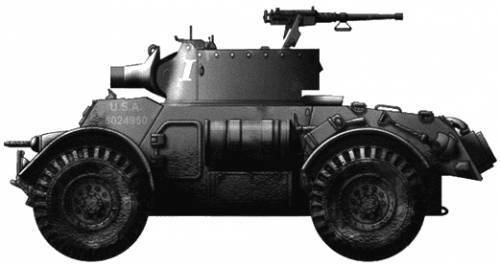
Needing a car fire support, the British have independently developed such a modification of the American armored car. The machine Staghound Mk II lost 37-mm cannon and coaxial machine gun, instead of which they installed a tank howitzer CS caliber 76 mm. To make room for ammunition, an exchange gun was removed from the armored car, and the gunner-radio operator was removed from the crew. Two smoke grenade launchers on the turret were replaced with four other types of mortars.
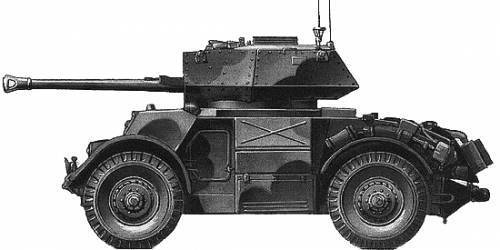
In 1944, the British designers created a new modification of the “Staghound” armored car with cannon armament. The home turret of the armored car was replaced by the corresponding unit of the Crusader III tank. For the convenience of the crew, an additional hatch appeared on the right side of the tower. Such an armored car carried 75-mm gun and 7,62-mm machine gun BESA. Course machine gun and gunner-radio operator were absent. Due to this modernization armored car to 15 tons. Modification with a tank turret was named Staghound Mk III.
Initially it was assumed that the troops will receive 100 Staghound Mk III vehicles, which will be converted from the existing armored cars of the basic version. In December, 1944, the order was halved. After the order was again reduced, as a result, by the spring of the 45, only the 32 armored car had been converted. Staghound Mk III cannon machines were limited used in Europe. It is known that several armored vehicles of this model were transferred to Canada, Denmark and Lebanon.
The losses of the Staghound armored cars were relatively small, which is why after the end of the Second World War, more than three thousand such vehicles of several modifications remained in the British troops. The active use of the Staghounds continued until the mid-fifties, when the outdated technology was gradually superseded by modern armored vehicles. American-made armored cars went to storage. A large part of the armored car was transferred to foreign countries.
Belgium was the first foreign operator of Staghound armored cars to receive this equipment at the end of the war, when the first squadron of armored vehicles was formed as part of its armed forces. In the second half of the 1940s, Great Britain transferred to Belgium a large number of “Staghounds” of several modifications. The vehicles were used by three armored cavalry regiments. In the early fifties, these units were disbanded, which led to the redistribution of equipment. Almost all the armored cars were handed over to the gendarmerie, which has already used a certain number of Staghound AA vehicles. The gendarmerie used former British armored vehicles up to 1977.
Since the late forties, Staghound armored cars have been acquired by the Netherlands. A little bit later, Denmark bought the remaining nearly three dozen Staghound Mk III cannon machines. Other European buyers of this technology were Italy and Switzerland, which eventually changed the composition of the weapons of their armored vehicles. For example, a number of armored vehicles that served in the Italian gendarmerie, instead of a cannon and a coaxial machine gun, received two Breda mod.38 machine guns, and instead of a course machine gun, Fiat mod.35.
The remaining American-made armored cars were sold to various countries in Latin America, Africa and the Middle East. In addition, the “Staghound” was used by India and Australia. In total, Staghound armored cars of various versions served in the armies and security forces of 25 countries. Some of these states exploited the equipment in its original form, others replaced weapons and equipment. For example, in the fifties and sixties, Lebanon and Sudan equipped the former British armored vehicles with turrets from AEC Mk III cars with different models of 75-mm cannons. Several machines for various purposes (commander machine, minesweeper and armored carrier rockets) were developed by Canada.
***
Currently, museums and private collections store a certain number of surviving armored vehicles T17 and T17E1 of various modifications. Despite the similar name, these cars had a different fate. The first of them was released in a relatively small series, after which, due to the absence of a buyer, she was sent not to armored units, but “out of sight” to the military police. The second was built in the amount of several thousand units and became the basis for a number of modifications for various purposes. Nevertheless, both developments of Ford and Chevrolet are of great interest both with historical, and from a technical point of view.
On the materials of the sites:
http://armor.kiev.ua/
http://warwheels.net/
http://staghounds.org.uk/
http://aviarmor.net/
http://warhistory.livejournal.com/
http://ww2db.com/
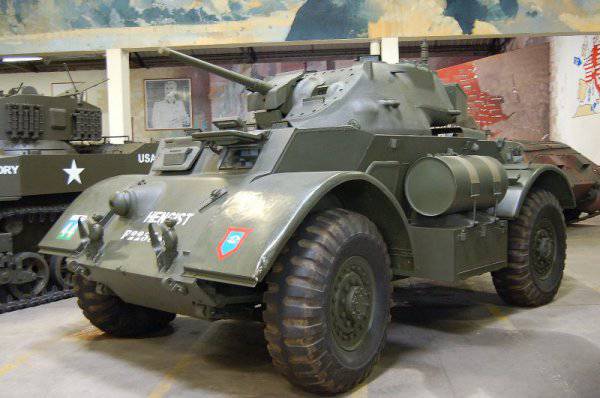
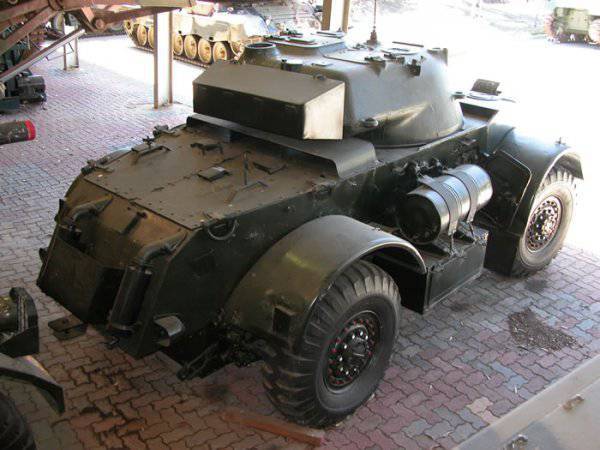
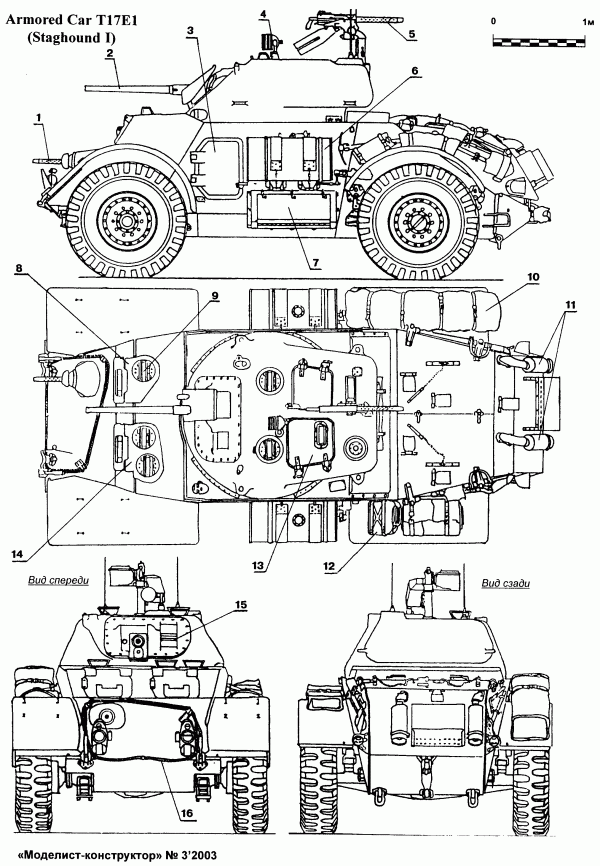
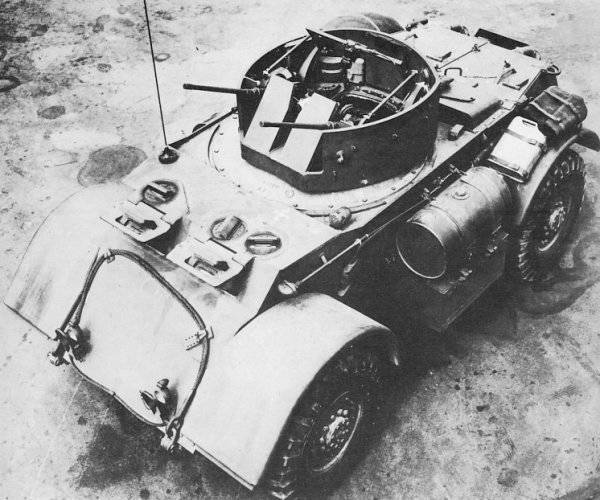
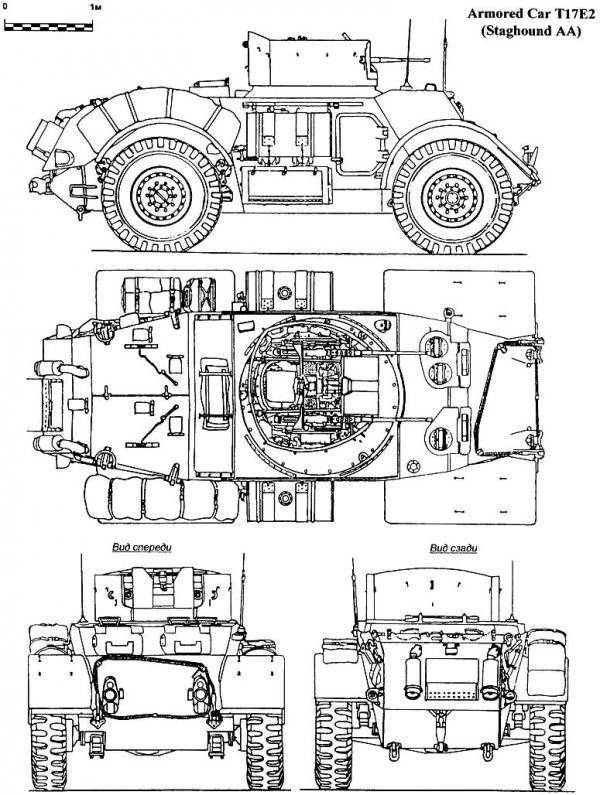
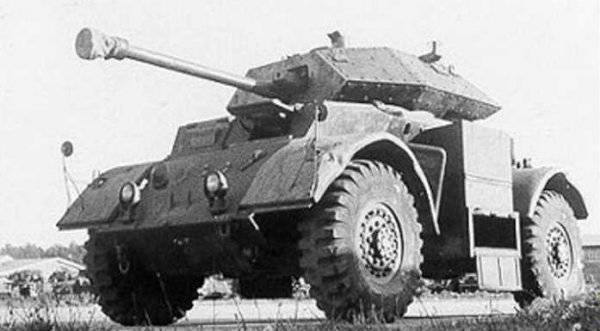
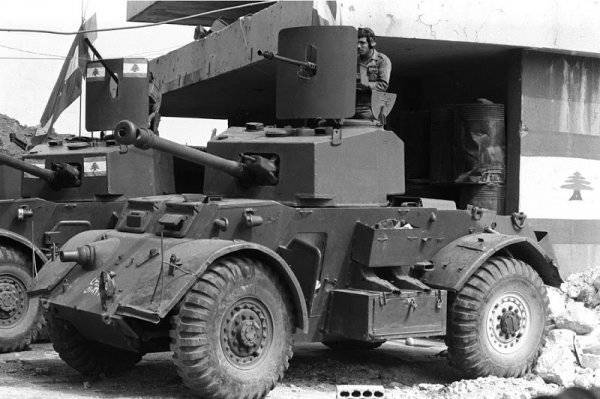
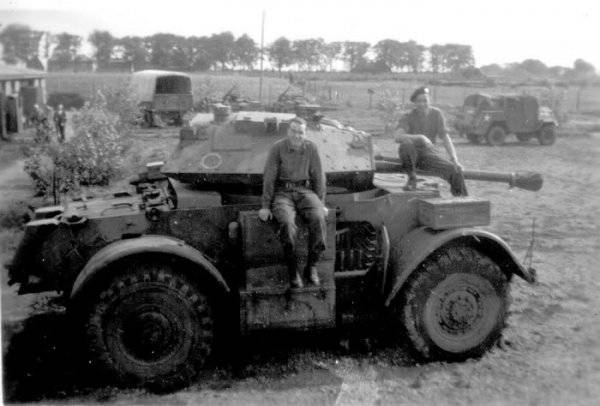
Information